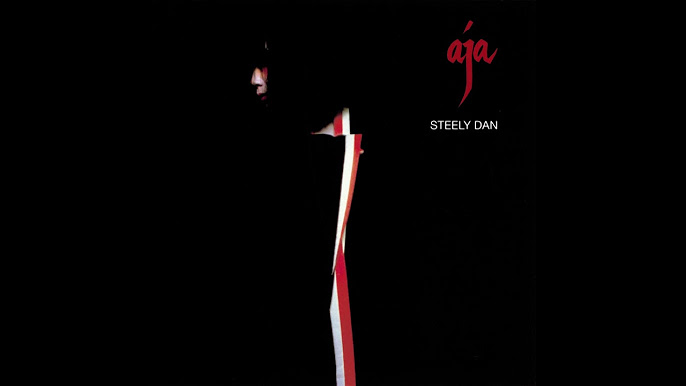Steely Dan is most known for their song “Reelin’ in the Years,” but they entered a full-on smooth jazz era in their late period, where they made unsurpassed music. Donald Fagen and Walter Becker were always known for their jazz-inspired music; when they began working together, they essentially made jazz-inspired rock. It remained one of their main influences, and by the end of their career, they made mostly smooth jazz music.
Aja is one of their best mostly jazz-inspired albums. Beyond their somewhat well-known song “Deacon Blues,” it features some incredible hits.
Aja has two songs which have backup vocals from Michael McDonald, a member of the Doobie Brothers. He is known for his naturally low voice, which he still uses to sing high notes.
Now, without further ado, let’s dive into the album.
Unlike Pink Floyd’s The Dark Side of the Moon, Aja is not really an album that connects the songs through transitions. It mainly just has good individual songs to listen to on their own, though the songs do have some similar themes.
It begins with the song “Black Cow.” It has a nice rhythm, which builds onto the bass beat. There are trumpets. Instead of a guitar solo, “Black Cow” has two: an electric piano solo and a saxophone one. The song afterward, “Aja,” is a full-on jazz song. It feels kind of like old-timey jazz with a modern tough to its instrumentation, with nice piano and electric piano. It also features a very quiet electric guitar, which is then distorted during the first of the two guitar solos. It also has a classic jazz-sounding saxophone solo played by Wayne Shorter, who played with Miles Davis. His saxophone solo is very different from Steely Dan’s usual sax solos, instead sounding more like an old saxophone solo from the 40s.
“Deacon Blues” is third, and it is my personal opinion that this song is the greatest from this album. First of all, the title is ironic, in that it is not even structured as a blues song. It is one of the smoothest jazz songs of all time, and the most calming Steely Dan song that I have heard (despite the lyrics being very sad). Every instrument in this song will calm you down, and before you know it, you’ll be whistling it in the hallways. It is masterfully composed, and all the instruments connect softly, which makes it both beautiful and serene. It only has a saxophone solo, and the saxophone is very soft, as if it is speaking to you.
“Peg” comes after, and this song is the one you hear on the radio. An interesting thing about this song is the fact that it has Michael McDonald backup vocals, and the way that they are put in the song. McDonald never visited the studio. He just recorded himself saying the lines, and sent them to Fagen and Becker, who used recording technology to input the lines into the song. Another interesting thing is that it has a strangely complicated bass part. As a whole, “Peg” is less of a full-on jazz song, but it is still 100% smooth. It has only a guitar solo, which is hard to play, but it doesn’t sound like a Skunk Baxter or Larry Carlton solo. Instead, it sounds rather exotic.
After that is “Home At Last,” which combines piano chords, saxophones, and vocals into a very cohesive tune.
“I Got the News” also has Michael McDonald backup vocals, I assume by using the same method as “Peg.” It has a very soft guitar solo played by Walter Becker, who does not play many solos of Steely Dan, supporting a main piano part that gets its own solo.
Last but not least is “Josie.” This is a very well-composed song. What I find interesting about it is that you can hear a very faint distortion guitar in the background in what is otherwise a very smooth jazz song. Its guitar solo is also played by Walter Becker. This song is another one that is less jazz, but still definitely smooth. Its solo uses the jazz amp, which works insanely well. In multiple sections, some instruments join in one by one. An interesting thing about this song is its lyrics. It begins talking about how the narrator and his friends can’t wait for Josie to come home, but later in the song, it talks about how Josie was the best friend they never had, implicitly stating that Josie might not be coming home.
Overall, I would say that this album is amazing. There is not a single song on it that is bad. In fact, all of them are at the very least great. This album is a complete example of Steely Dan at their absolute best.

Mr. Clar • Nov 21, 2023 at 1:10 pm
Wonderful review of a wonderful album. As a life-long jazz fan, Steely Dan is one of my favorite rock/pop bands because of their use of the idiom. I’m glad to see them get a little play in The Shield. Hopefully it will inspire some of your peers to check them out. I still own and, incidentally play on the turntable, my 1977 copy of Aja. It still sounds great!
I’d add a couple of things to the mix here: In addition to playing with Miles, Wayne Shorter was also a key figure (off and on) in the seminal jazz fusion group, Weather Report from 1971-1986 or so. Additionally, legendary Rochester drummer, Steve Gadd, frequently worked with Steely Dan … as he did on Aja’s title track. It’s also worth noting that “Home at Last” is based on The Odyssey, pretty cool!
It remains a tossup, by the way, as to my favorite Steely Dan Album. Some days it’s Aja. Others, it’s Gaucho.